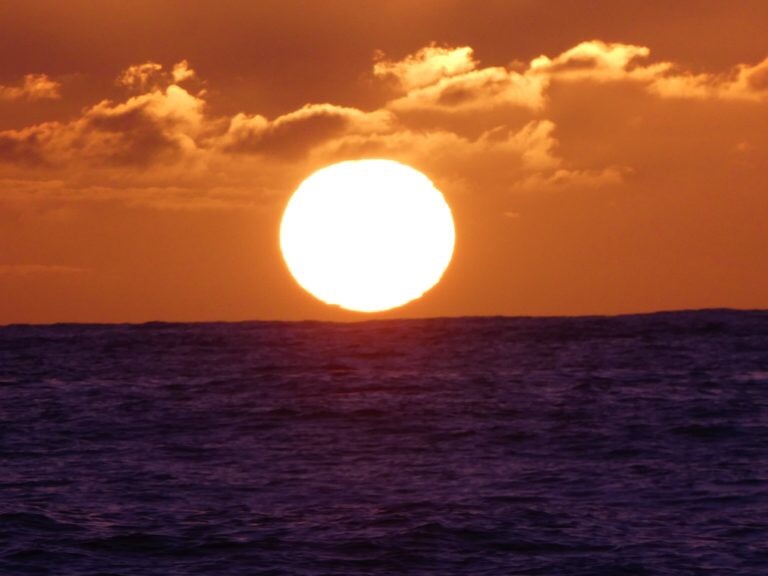By noon Sunday (27 October) we had covered another 125.9 miles towards our destination. The wind had completely died (less than 2 knots recorded) and we were motoring along on a flat calm sea on a hot and sunny day. The temperature had definitely increased as we get closer to Australia so we are both happy sailing along in shorts and t-shorts once again. We had officially crossed into Australian waters during the day but still no other boats around that we can see either by sight or on radar although we know, from the SSB net, there are at least five yachts en route to the same port as us, Bundaberg. Richard fished all day again but nothing came close other than a couple of curious sea birds who hovered over the lures bobbing along the surface behind us.
During the day we continued reading the Rally documents aimed at facilitating our arrival into Australia. One thing that we hadn’t noticed was the need to clean all shoes to ensure that there was no foreign soil on them. So I got the shoe box into the cockpit and gave them all a clean and polish….kept me out of trouble for a while.
Later on, after the net, we had dinner and for the first time ever on passage we actually sat at the cockpit table to eat from plates with knives and forks rather than from a bowl in the lap. Was very nice….
During another dark starry night the wind picked up a little so we pulled out the genoa again to try to increase our speed as we were now experiencing adverse currents. By 6am on Monday (28 October) the wind has gone forward of the beam so we got all three sails out to try to maintain our speed. We continued motor sailing though as the airs remained light at only 7 knots. That worked for a short period but then the wind switched to the west and died again.
By 10 am we were motoring with just the main up and the fishing rod was deployed. By noon we had picked up a positive current and were speeding along at 6.5 knots with very low RPMs. Our next 24 hour period saw us covering 133.8 miles. The main eventually started flapping in the light airs so that came down again.
By the time the sun was going down we were officially in Australian waters, approaching the Coral Sea and the Great Barrier Reef Marine Reserve. So no fishing from here….so sadly Richard had to retire his fishing lures for this trip. No fish landed just one little fishy nibble and that was it. We were now in a shipping lane and saw three large ships going north all in very close proximity. MV Romi crossed our bows around three miles ahead whilst the other two went behind our stern.
At 9pm we were motor sailing with the genoa up in very light airs. All SSB net boats reported the same conditions, including those on their way to New Zealand, so there doesn’t look like there will be much wind any time soon. Despite the 10 knot forecast…..
We motored all night across a glassy sea and it felt more like being on a lake than being in the ocean out of sight of land! All very strange. By 6am on Tuesday (29 October) we were approaching Fraser Island (not that we could see anything) and the wind finally picked up. By 9 am the engine was off – having been on for 48 hours – and we were sailing again. Woo hoo! The seas were lumpy and we were bouncing around but we didn’t care.
By 10am we were sailing towards the port of Bundaberg, our destination. We hope to arrive there later this afternoon so this will be the last passage blog. We are excited to be arriving into Australia and look forward to getting cleared and being made legal. We are ready for the officials to come onboard and do their thing and we have certainly prepared like we have never prepared before. So fingers crossed it will all go smoothly. Will be in touch when we get back on line.
Bye for now
Jan



